Ducati DesertX: 10 Takeaways
After finally getting to throw a leg over Ducati’s all-new DesertX at the Aussie media launch, here are our 10 takeaways from the experience.
We’ve been longingly eyeballing the DesertX on screens since its concept unveiling back in 2019. So, to finally get our hands on it at the recent Ducati media launch, and ride it to Bathurst and back, was long overdue.
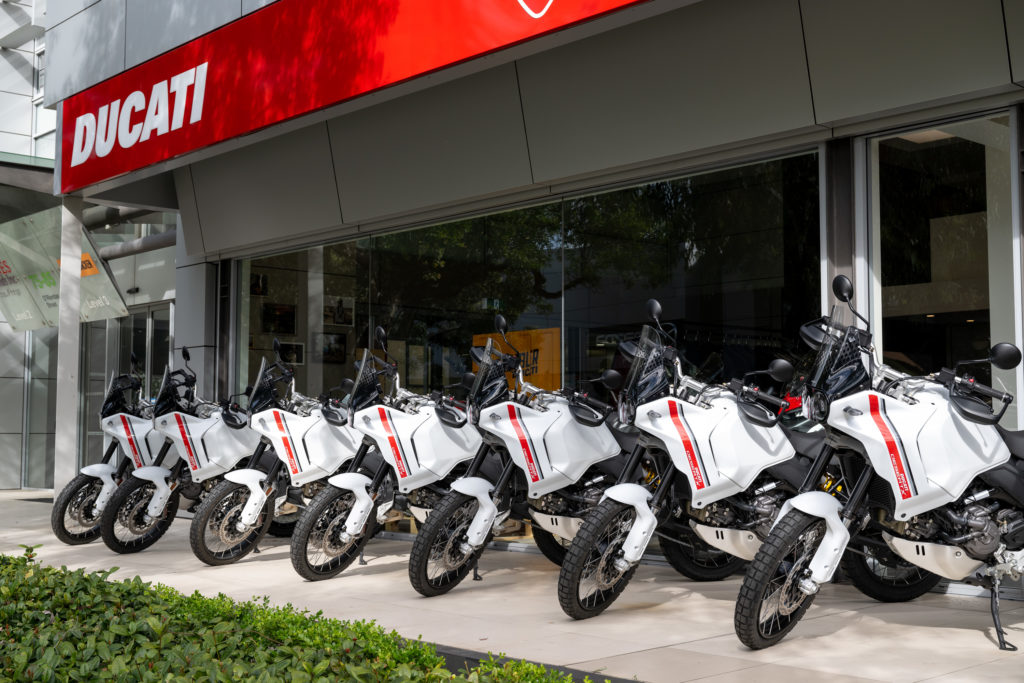
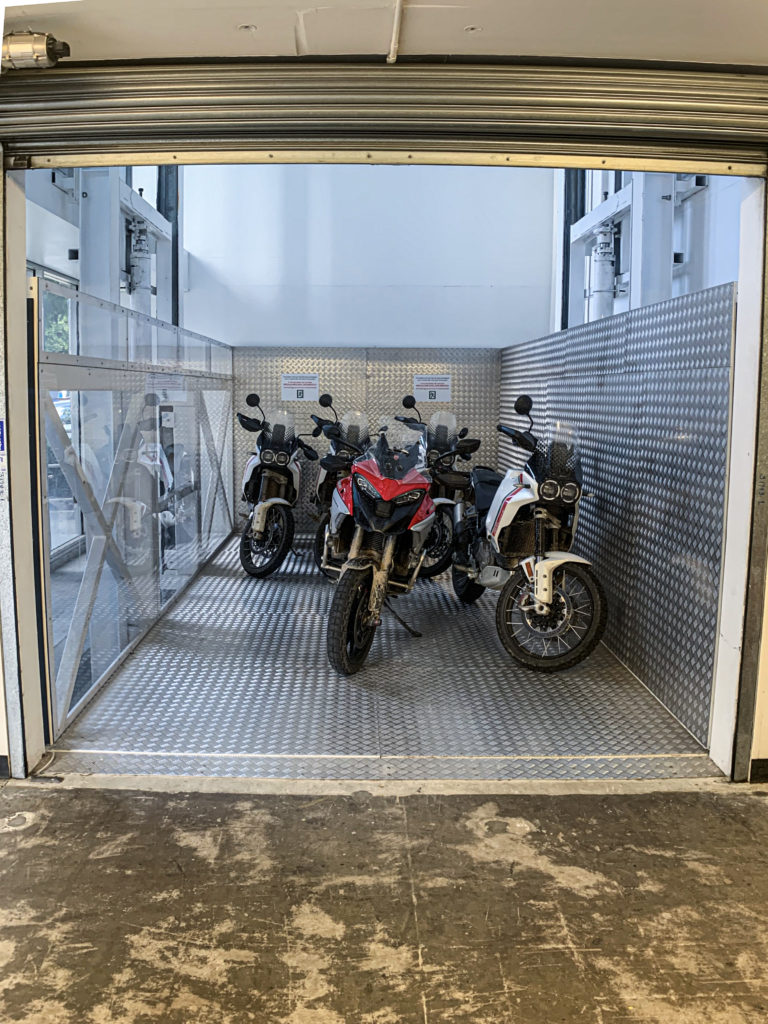
In true media launch style, a group of Australia’s best moto publications came together to Ducati Australia’s HQ in Alexandria. The goal? To finally get some real-world insights into Ducati’s first true off-road offering: the DesertX. The collective crew headed west to Bathurst aboard eight brand spanking new DesertX’s for an overnight stop at Mt Panorama, before making our way back to Sydney. We covered 600 or so kays of highways, mountain roads, gravel, singletrack and more, complete with Friday-night peak-hour traffic to really sort us out.
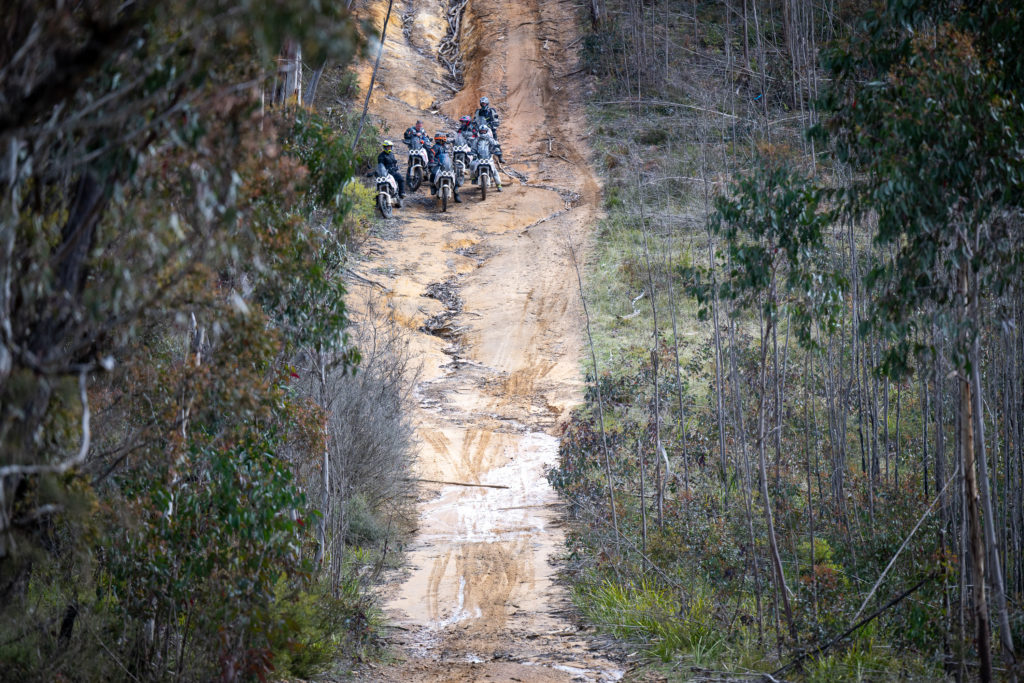
In lieu of a long-term test bike (which has been slated for us very soon), we’ve pulled together our top 10 takeaways from two well-spent days aboard the all-new DesertX…
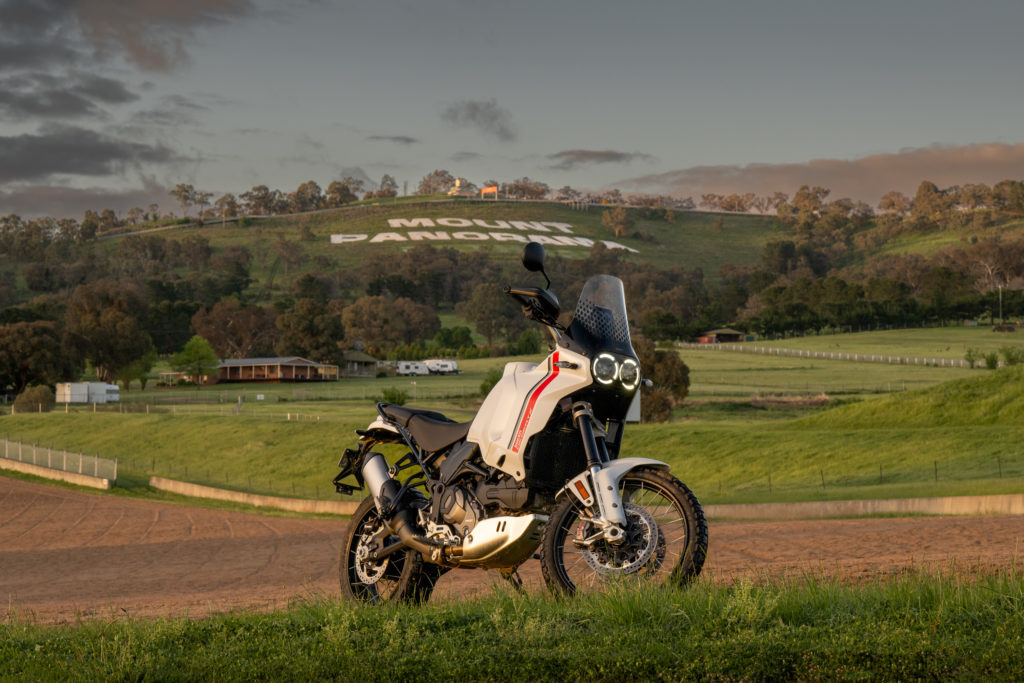
1. THE CHASSIS OFFERS INCREDIBLE VERSATILITY
Ducati has obviously spent a huge amount of time perfecting the DesertX chassis. It’s poise and balance is nothing short of superb – on road and especially off. The dirt-friendly 27.6° rake and relatively long 1608mm wheelbase aid stability both in the dirt and on high-speed tarmac sweepers, albeit with a slight increase in turning radius. With ample ground clearance (250mm), well thought-out frame gusseting, and even a grab-rail on the rear to pull yourself out of trouble, Ducati don’t shy away from showcasing their off-road intentions for all to see.
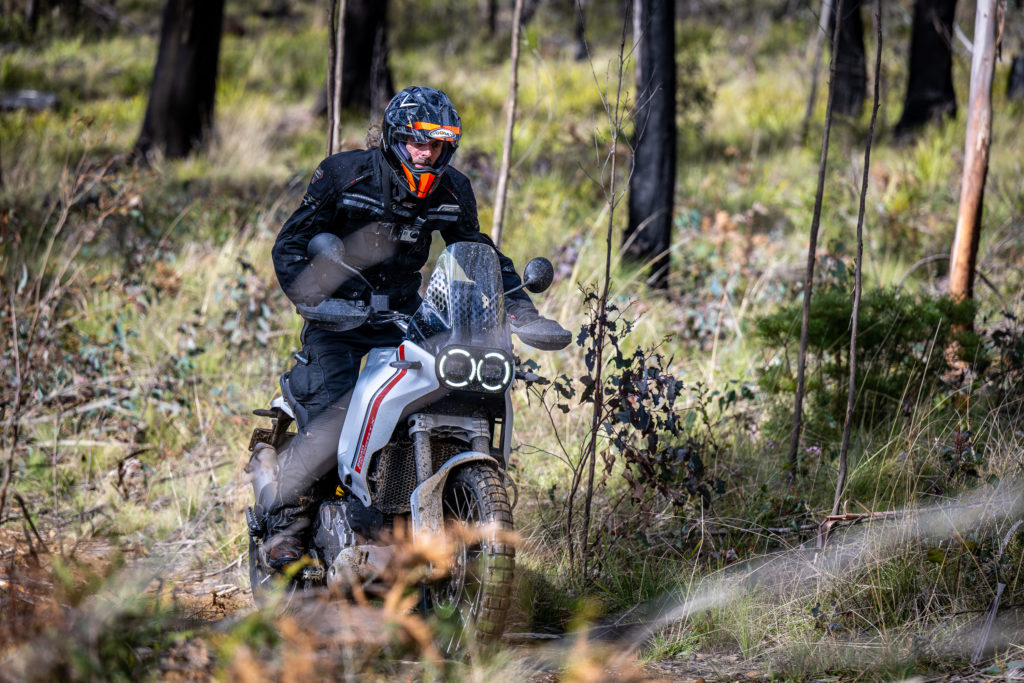
2. THE BIKE’S WEIGHT HAS BEEN CLEVERLY DISTRIBUTED
You can’t deny that the majority of adventure bikes appear top-heavy. And once full of fuel, most literally are top-heavy! Which is why Ducati has worked hard to keep the centre of gravity as low as possible on the DesertX. Its tank may look tall, but the fuel load itself is all located around knee height (when you’re sitting on the bike) and below, while that tasty white tank arcs above a space that only houses the air filter and ECU. This low fluid distribution – alongside the L-twin’s forward head running parallel to the ground – means the bike is super-manoeuvrable when picking your way through rough trails and yet extremely stable on the road.
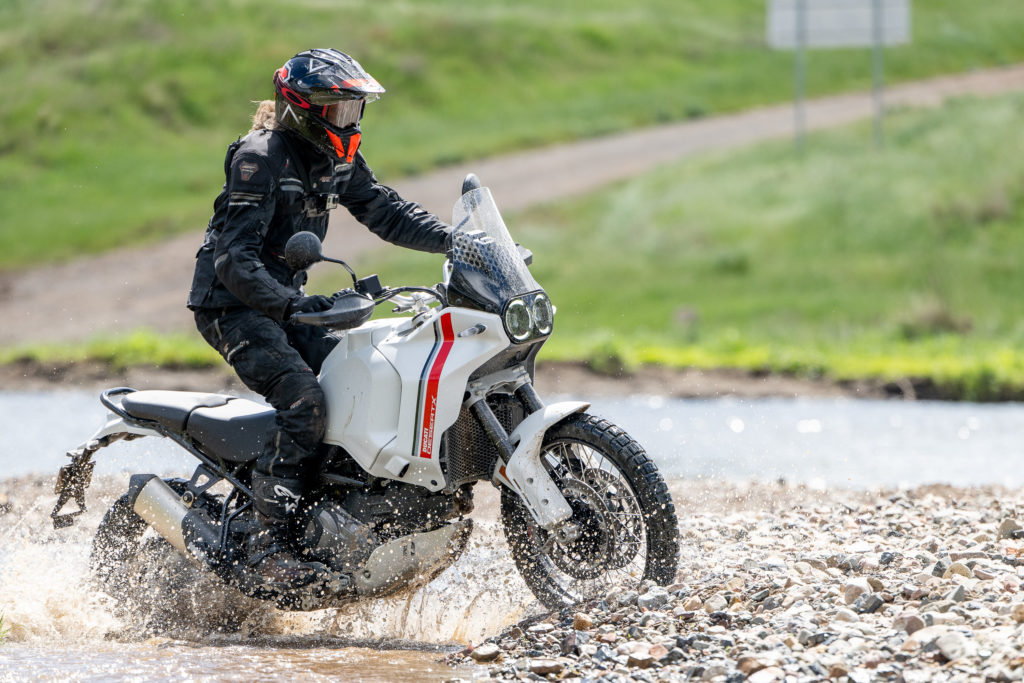
3. THE KYB SUSPENSION LIVES UP TO THE HYPE
It’s here that there’s been a lot of questions coming our way because, for many, suspension performance can be a deal breaker. Has Ducati made the right choice developing their off-road suspension with Kayaba? In one word: yes. Bolted into the massive forged triple clamps are fully adjustable, upside-down 46mm fork stanchions. As a result, the front-end feels more than ready to take serious off-road punishment. While the bikes were basically new when we jumped on them, the small-bump compliance off-road was a tad harsh, mainly through the seals being very tight out of the factory. Backing the compression damping off a few clicks made a big difference for my 70 or so kilos. And a blast on (Ducati Product Genius) Nick Selleck’s run-in DesertX felt much plusher through that initial 100mm of travel. That said, the full 230mm of front-end travel offers great support and poise, all the way through the stroke.
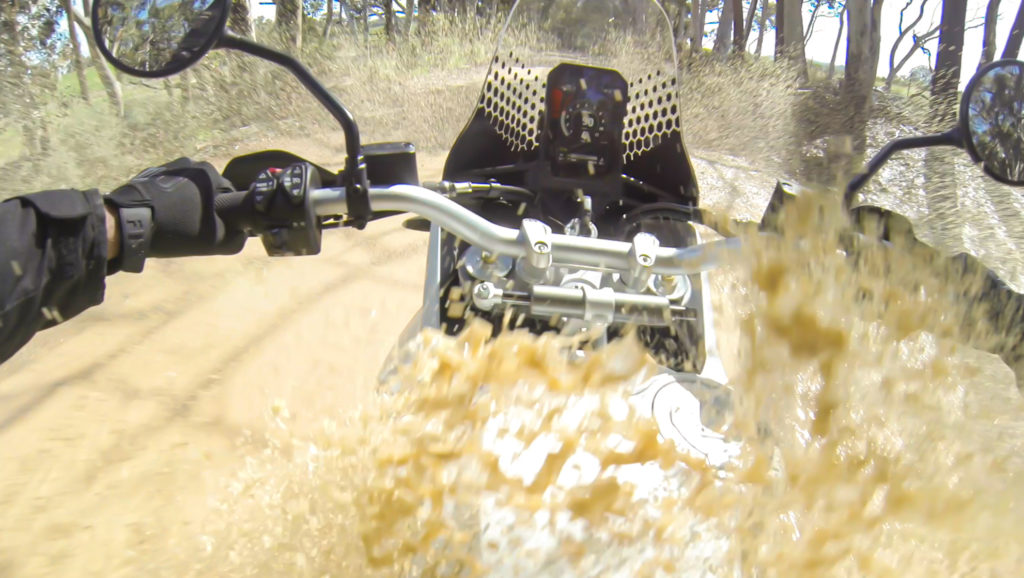
Even under big, sharp-edged hits at speed, I was pushed to get a harsh bottom-out. Not until an unavoidable, huge puddle-filled fire-road ditch hit at speed did my wrists feel the end of the Kayaba’s stroke hitting its limits. Thankfully, it kept tracking straight, rather than delivering a ride-ending kick. And that’s testament to the solid internals KYB and Ducati have pulled together for the DesertX. This, alongside the stock steering damper, made for very consistent front-end handling on everything we rode.
On the rear, one of our biggest niggles on big adventure bikes (including Ducati’s MTS V4) is blowing through rear travel that the front handles without fault. Not the DesertX. Kayaba’s fully adjustable rear shock more than keeps up with the front-end. Its 220mm travel has a remote pre-load adjuster for tool-free changes and adds to that superbly balanced chassis feel.
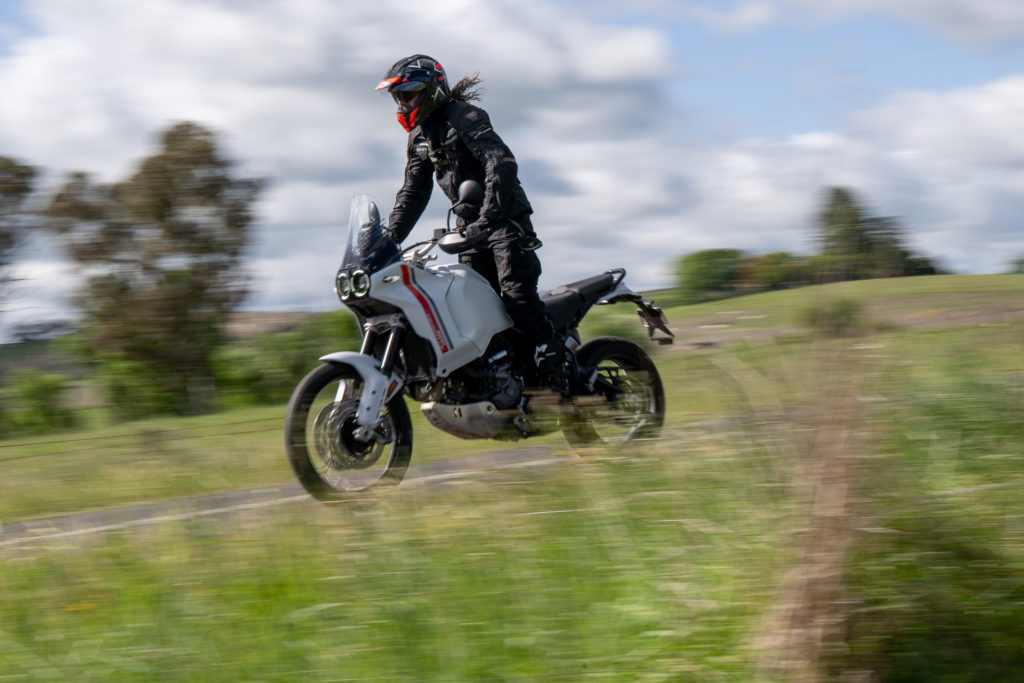
On the flipside, it’s a very, very long-legged road-going bike, but it’s surprisingly planted and stable at speed. Far from a wallowing waterbed, Ducati hasn’t forgone the X’s cornering prowess on the blacktop. While the 21-inch front doesn’t allow for superbike-like flicking and diving into corners, it changes direction surprisingly well; tracking beautifully and consistently, even more so when the tarmac is riddled with potholes. With the generous ground clearance, scraping pegs is a big ask that I doubt many will pull off unless dropping some more road-oriented tyres on. Though I dare say that challenge will be accepted by more than a few…
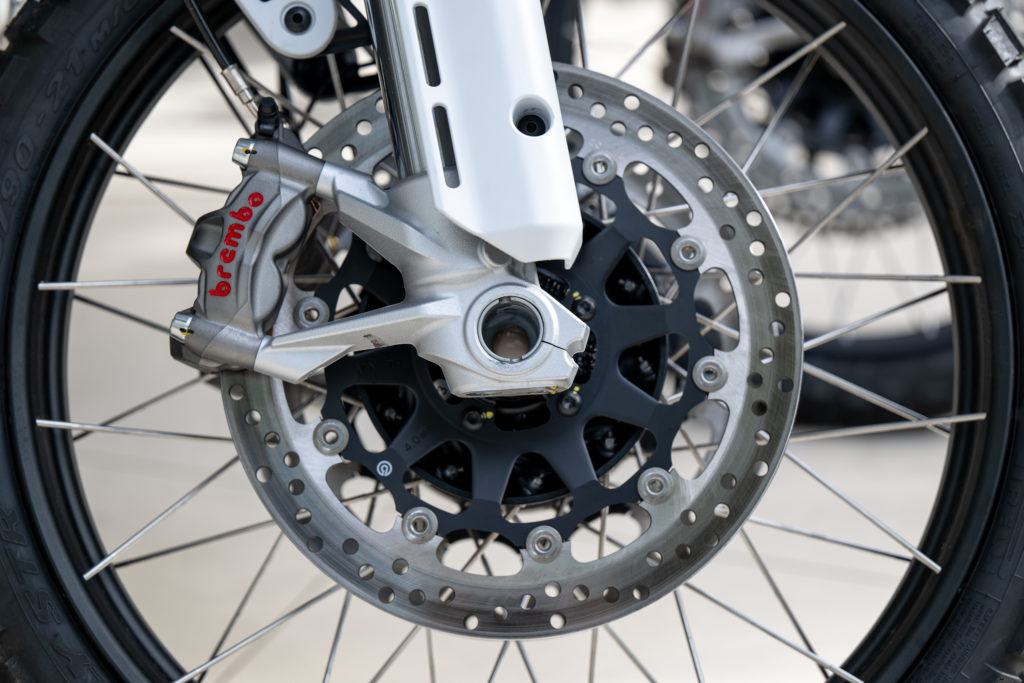
4. THE BRAKING PERFORMANCE & ABS TECH IS NEXT-LEVEL GOOD
In response to your right hand’s inputs, Brembo four-piston M50 monobloc radial calipers bite down onto twin 320mm front discs, while out back, a single 265mm disc is pulled up by a double-piston floating calliper, again by Brembo. To say they’ve got power and feel is an understatement. It’s top shelf, superbike kit, and then some. Yet with all the braking power in the world at your finger- and toe-tips, it’s the tech behind them that really makes these Brembos shine. Ducati’s work with Bosch on ABS makes every iteration of ABS before 2022 seem like horse and cart tech. Their cornering ABS is brilliant; the brake setting is programmed to offer the best power when using it on road, but incredible feel and control when off-road. It’s both lean- and terrain-sensitive, and easily the best iteration of ABS I’ve ridden. The rear brake is a masterpiece – soft feel, yet with amazing power and feedback, and backing it in to turns has never been so easy for me. Turning the rear ABS off makes the DesertX perform like every bike you’ve ridden up till the here and now. And for many, that may be the setting of choice. That said, add a small level of ABS on the rear when in the dirt, and suddenly the ability to lock up a little – yet keep complete control – is magic. We’ll go through more of the ABS settings later. Additionally in the slow-down department, there are three levels of engine braking at your thumb tip. The lower the number, the more engine braking (think high-comp single). Go higher, and two-stroke fans will feel right at home.
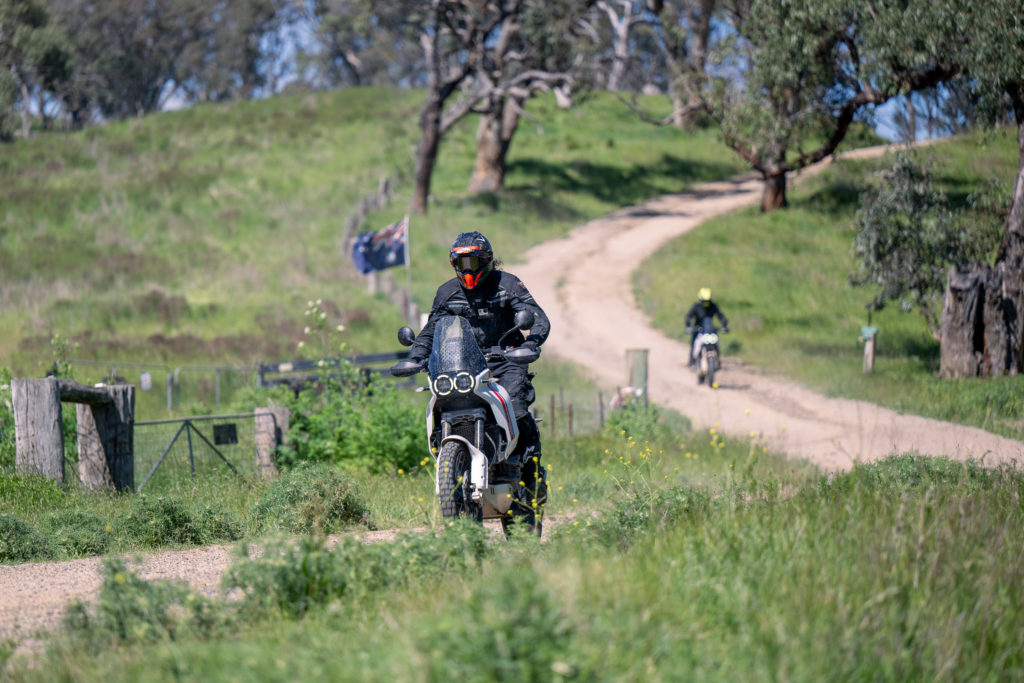
5. THE TESTASTRETTA ENGINE IS USER-FRIENDLY & VERSATILE
That stirring and reassuring rumble from the big 937cc Testastretta engine is something special (let’s just say that hearing eight of them start up in the Ducati HQ garage was incredible). And that rumble is ready to roar whenever you need it. Be it to squirt up a pinch climb on a snotty trail in first, or pass a road train in sixth, it delivers smoothly and builds as quickly as you need at a flick of the wrist. Especially if you begin to tune (or de-tune) that power delivery through the electronics to suit the terrain or conditions, fuelling and throttle feel is spot-on in all settings (read more on that in Electronics, below).
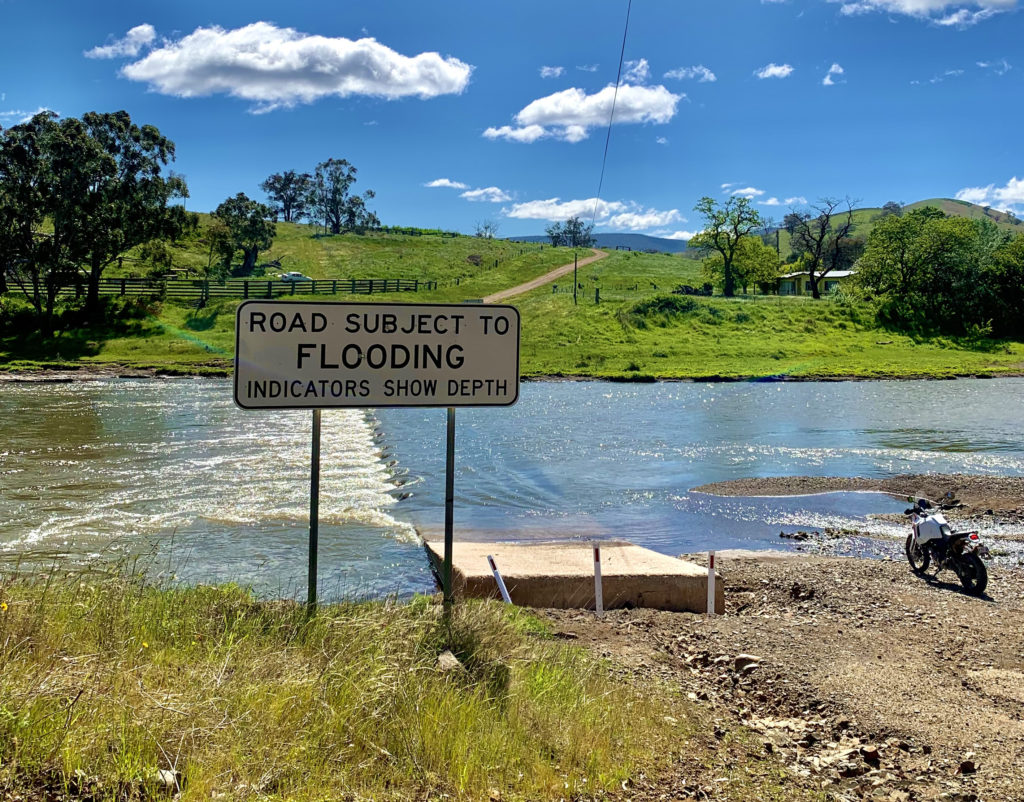
While 15 years of development have harnessed every imaginable dollop of power from one of Ducati’s most cherished engine blocks, it’s the new gearbox that really makes the DesertX work, especially off-road. First and second are aimed squarely at off-road and make short work of tech trails. Third does feel a long, long way from second, which I didn’t see as an issue, but if you’re commuting a lot on it, you will find yourself running high second-gear revs in traffic. At least people will hear you coming!
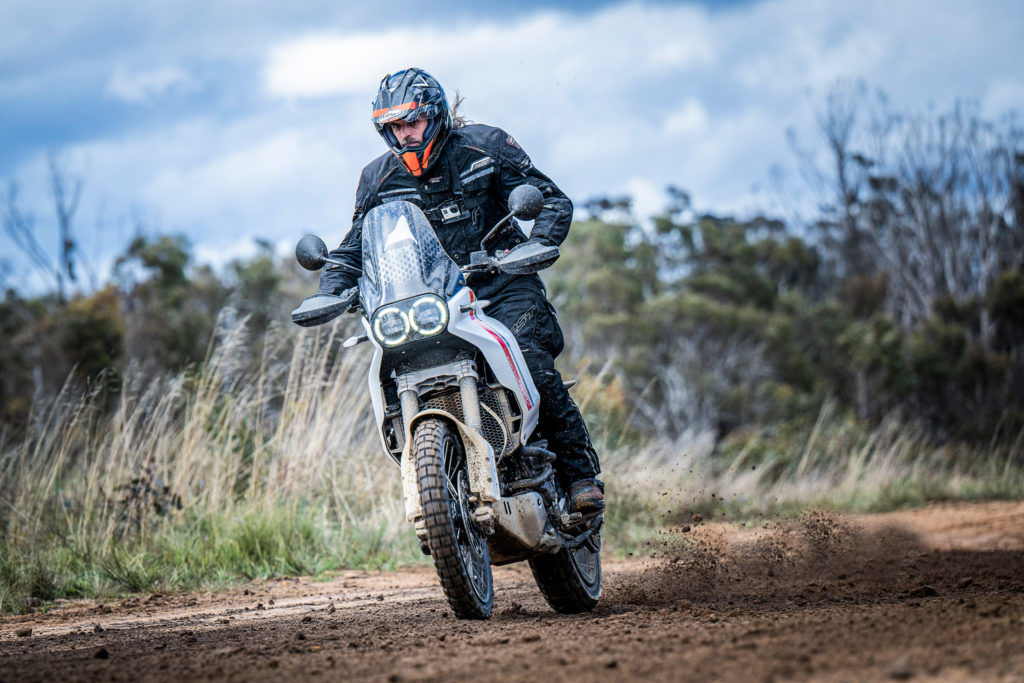
6. ELECTRONIC INTERVENTION IS SUPER-SOPHISTICATED
We’ve noted the impressive engine performance above, but all that raw power is channelled into multiple personalities, thanks to the bike’s electronic rider-aid systems. The DesertX features six riding modes – a first for Ducati, with Sport, Touring, Urban, Wet, and the off-road focused Enduro and Rally settings.
| RIDING MODES | TERRAIN | POWER MODE | MAX POWER | THROTTLE RESPONSE |
| Sport | Road | Full | 110hp | Dynamic |
| Touring | Road | High | 110hp | Smooth |
| Urban | Road | Medium | 95hp | Smooth |
| Wet | Wet Road | Medium | 95hp | Smooth |
| Enduro | Off-Road | Low | 75hp | Dynamic |
| Rally | Off-Road | Full | 110hp | Dynamic |
All modes have your choice for three levels of Engine Brake Control (EBC); eight levels of Ducati’s Traction Control system (DTC); four levels of Ducati Wheelie Control (DWC, Ducati Anti-Hooligan control?); three levels of ABS ranging from road to off-road. And finally, you can turn the ABS completely off in Enduro and Rally modes. I just felt a ton of you sit up and listen right about now…
Engine-wise, four power settings allow you access to Full, High, Medium and Low maps, along with the ability to set your throttle response to Dynamic or Smooth. The Enduro and Rally modes in their base settings are big step from the other four modes.
In Enduro mode, horsepower is restrained to Low (a mere 75 hp) with Dynamic throttle response, and ABS set to 2, DTC is maxed at 3 along with no wheelie control, and EBC set to 2. It’s the most rider-friendly mode on the bike for off-road by a long shot. After a day with everything turned off, Enduro mode was an eye-opener in terms of just how much it works to keep you rubber-side up. Impressive stuff. Of course, Rally mode has you accessing all the Testastretta’s power (yep, 110hp for you to play on dirt), with Dynamic throttle response, ABS backed off to 1, DTC set to 2, and wheelie control is again off. Rally mode really allows you to send the DesertX, letting you step the bike out, exiting corners like a Dakar pro, yet keep it from swapping out from under you. It’s a surreal feeling knowing the bike is working with you and not trying to send you high-siding into the scrub.
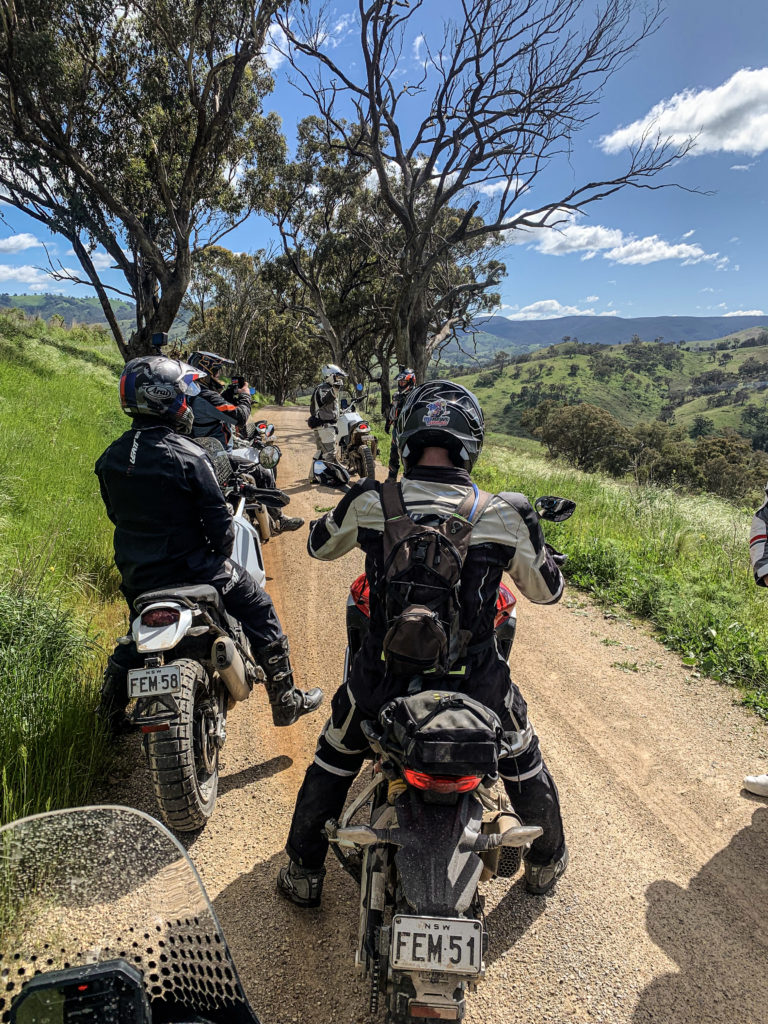
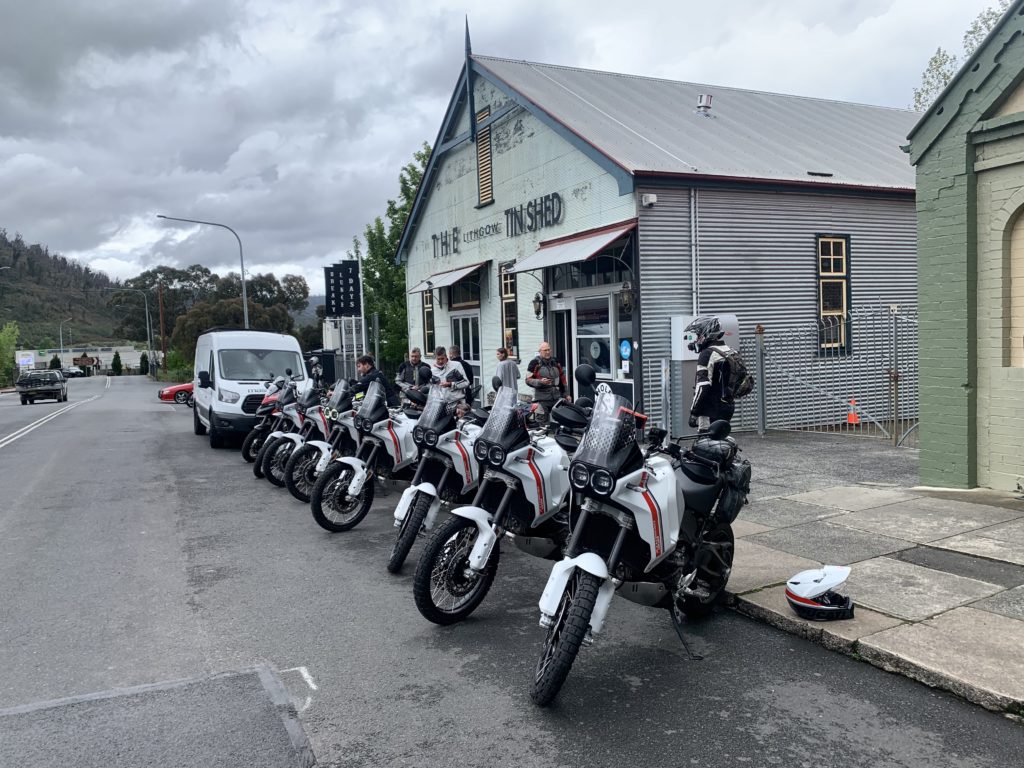
Need to customise even further? Tune to your heart’s content. I found that taking photos of my on-screen settings and making notes come end of the day really allowed me to tune the bike to how I wanted it.
In the comfort department, the bike has a simple-to-use cruise control and an up-and-down quick-shifter. Admittedly, with only 400km on the bike when I jumped on, it did feel a little notchy and needed more forceful pushes up and down than some of the other European brands I’ve ridden. That said, anyone that’s ridden a dry-clutch Duc twin in the past won’t bat an eyelid at the mechanical feel through the boot.
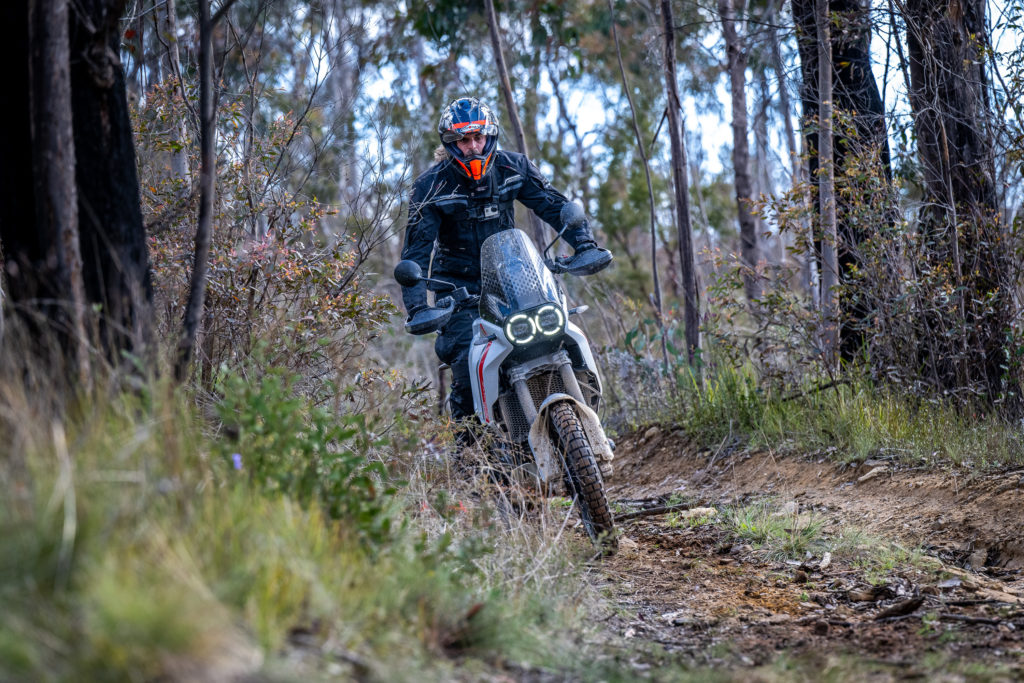
In order to access all of the bike’s settings and also display basic info, there’s a big, portrait-oriented five-inch TFT colour display. The display can be set in standard mode, with a giant tacho in the middle, or in Rally mode with road book-looking co-ordinates that can be toggled and reset via the handlebar from your left thumb. All in all, the UI is pretty intuitive in getting to the settings you need. My only complaint would be that getting out of setting menus requires just as many clicks as getting in, and it’s here that a home button would rock. But once you get the hang of it, it’s logical and simple. And give yourself a day or two to get your head around the depth of tuning available.
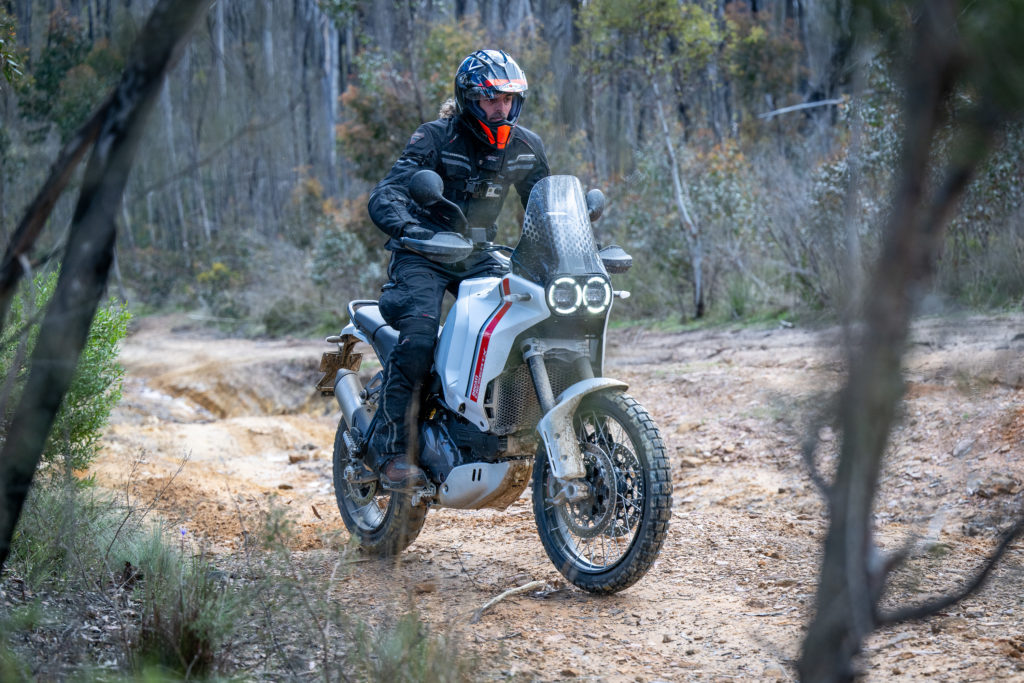
7. THE STANDARD RUBBER WORKS WELL, BUT THERE’S SCOPE TO IMPROVE OFF-ROAD MANNERS
Pirelli has pulled a road-biased off-road rabbit out of the hat with their Scorpion Rally STR tyres. They’re exceptional on the road, with a profile that’s ready to lean, and there’s little to no noise or road vibration whatsoever. Off-road, they’re actually pretty useable, despite their look; Ducati and Pirelli working together to provide a tyre that complements the full capability suite the DesertX claims. That round profile and road-going pressure (at 28psi) did have it occasionally spearing off bigger sharp-edged rocks and getting squirrelly in deeper mud/sand, but it got us where we were going, even some steep singletrack, both up and down. We’ll need to spend more time on the dirt and work with tyre pressures more accurately to really see how they perform. It needs to be said that fitting some dedicated off-road rubber would transform the DesertXs dirt-going capabilities. First thoughts would head to the Motoz Tractionator Adventure. Of course, that front guard may need to be pulled off for chunkier tyre clearance, and we’re thinking a traditional enduro guard mounted under the lower triple clamp would sort rocks wedging in there and look the goods, though handling at highway speeds may suffer.
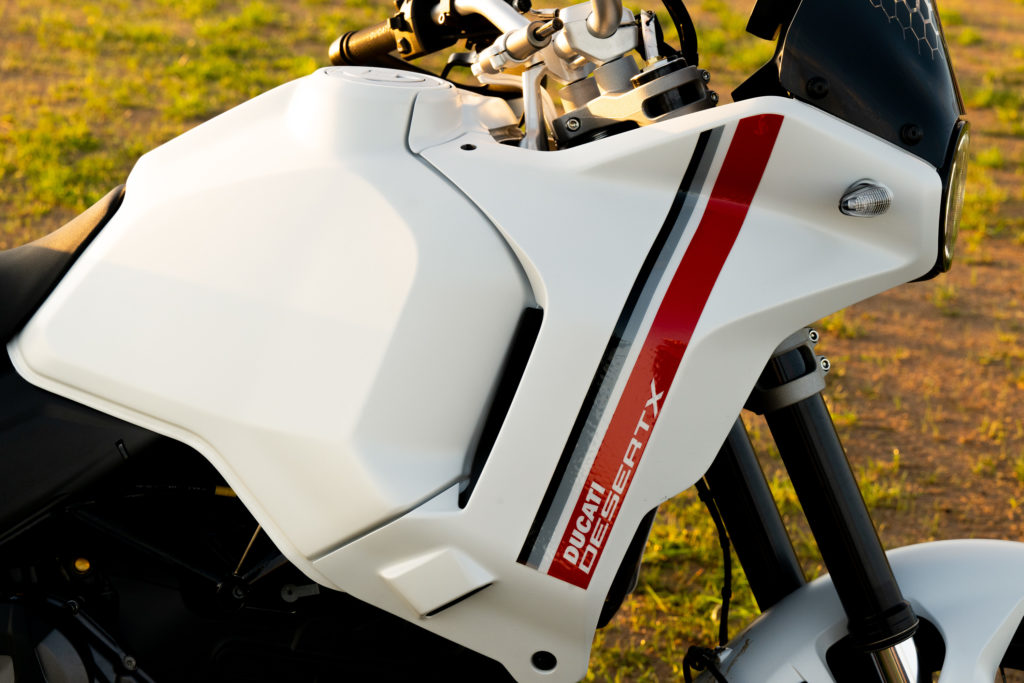
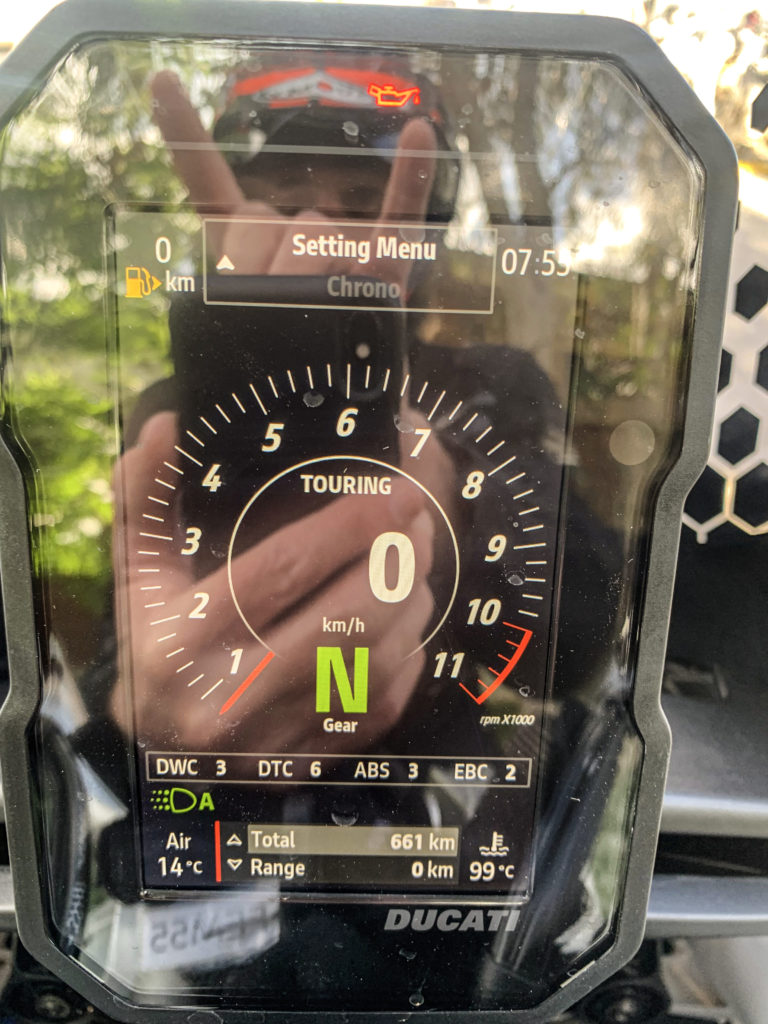
8. FUEL ECONOMY & RANGE IS VERY RESPECTABLE
We got around 350km from the 21-litre tank with some spirited back-road riding, alongside singletrack, sand blasting and gravel roads. Ride a little more restrained and 380km+ should be possible if you don’t mind hyper-miling and drafting the odd truck. Also of note is that this may be one of the most accurate Ducati fuel gauges ever. I ran the bike to 0km range and after idling into the servo, one shake of the tank had it feeling pretty damn empty. Interestingly, steel is used in the tank construction, all in the name of maximising space for precious fuel inside. Ducati engineers found that a plastic/poly material would lose up to 1.5 litres internally.
Of course, that epic-looking factory auxiliary rear tank we’ve all seen on promo videos will be available by the time you read this, which adds another 8 litres to your fuel load. It’s a sweet system – when you get low in the main tank, you switch the rear to dump all its fuel to the front tank in one hit. And that’ll get you somewhere around 150km farther. Not bad at all for us in such a big country.
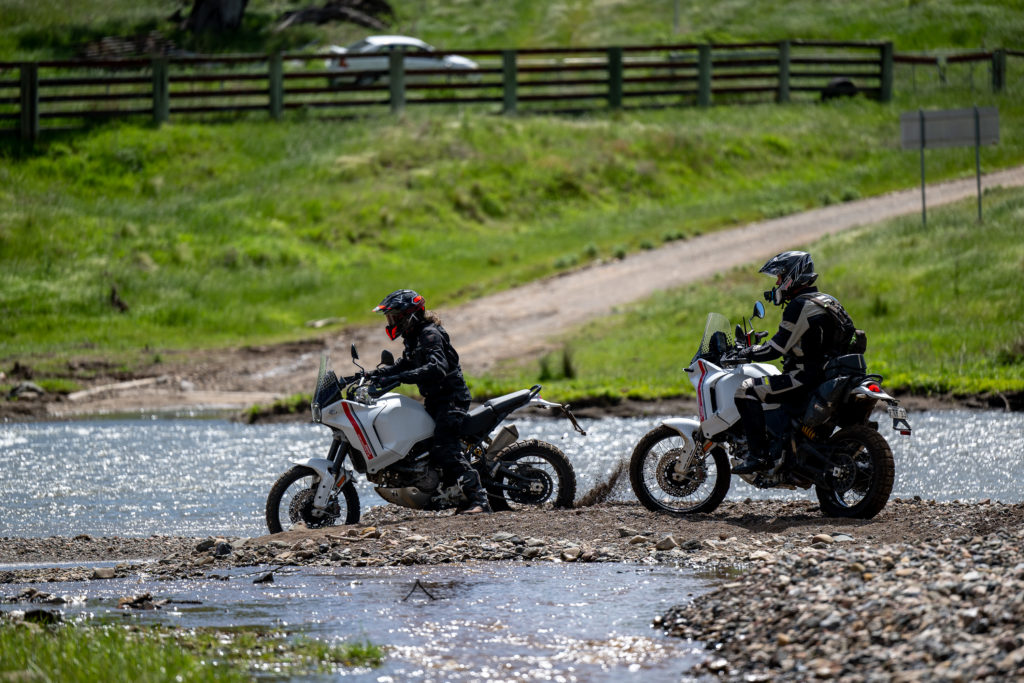
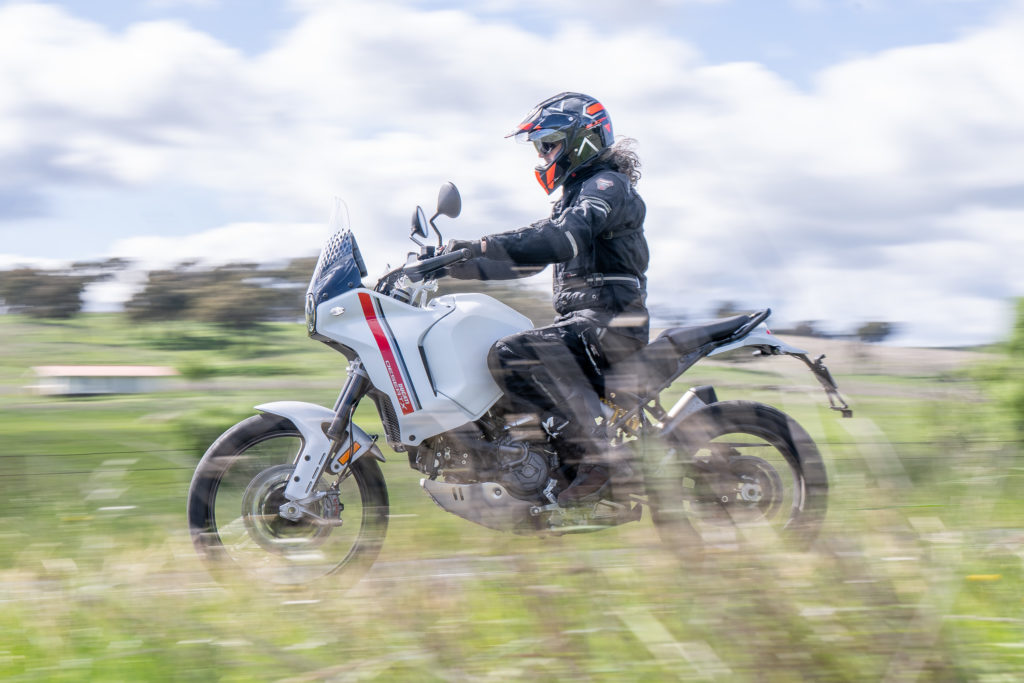
9. DUCATI GOT THE COCKPIT COMFORT EQUATION RIGHT
The stock seat is a very sorted proposition. It’s got enough ease of movement when sitting or standing and enough comfort for burning highway kilometres. It comes off easily and you’ll find a 12V outlet and USB underneath (another 12V blanked port sits under the front fairing). Of course, if off-road is your focus, you may want to try the optional rally seat. Also of note, the stock seat height of 875mm is replaceable with a 20mm lower variant and a 25mm higher one for taller riders. Get that right and the DesertX will be a true kilometre cruncher.
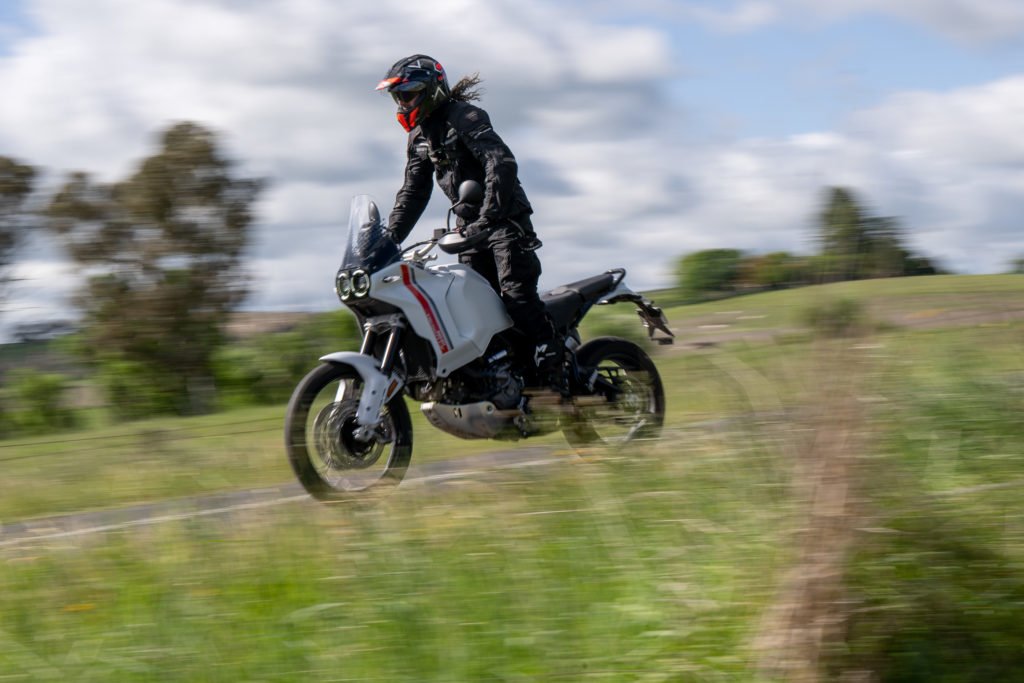
Wind-wise, the stock screen is a long, long way forward in true Dakar rally style. No dramas with my full-face helmet even coming close to it. So, while it provides good protection at lower speeds, highway buffeting was noticeable for my 184cm height. It’s not overbearing, but I did find myself tucking down a bit to ease the neck at 100km/h+. Ducati has a taller and wider touring screen available to sort that, and I dare say both bigger and smaller aftermarket screens will become available in the near future.
Cockpit-wise, the wide bars create a commanding position; their height providing a solid position for standing. Adding to this, the tank is quite short (front to rear), which makes it very easy to get your weight forward. It’s widely known that Ducati’s footpegs have always been minimal at best, most likely due to the lean angle attained by their riders. Thankfully, the DesertX has some big, grippy and widely spaced off-road-oriented pegs that let you feel planted and secure. No need to upgrade here. They even come with rubber inserts, should you want to commute in non-moto boots.
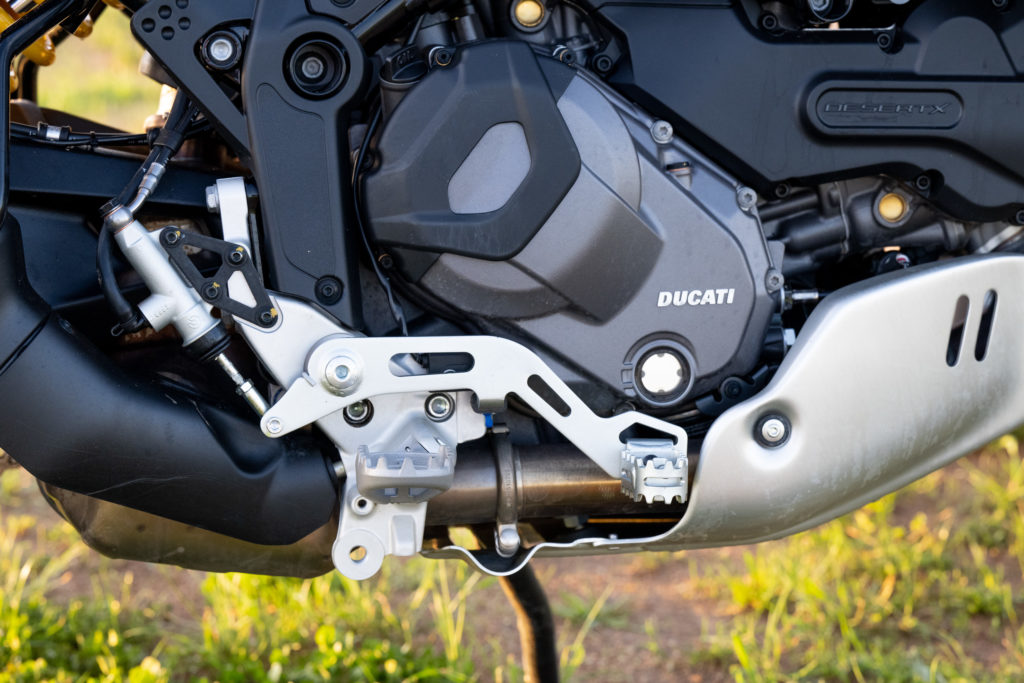
With all the tech on hand, it was easy to miss one of my favourite features on the DesertX. The on/off-road rear brake pedal and gear lever adjustments are genius. For the rear brake pedal, it’s a simple pull out and rotate for a higher off-road position, or lower road-oriented position. On the shifter side, removing a 5mm Allen key to move between the two positions available is all it takes. Both are well thought-out and incredibly useful in the real world.
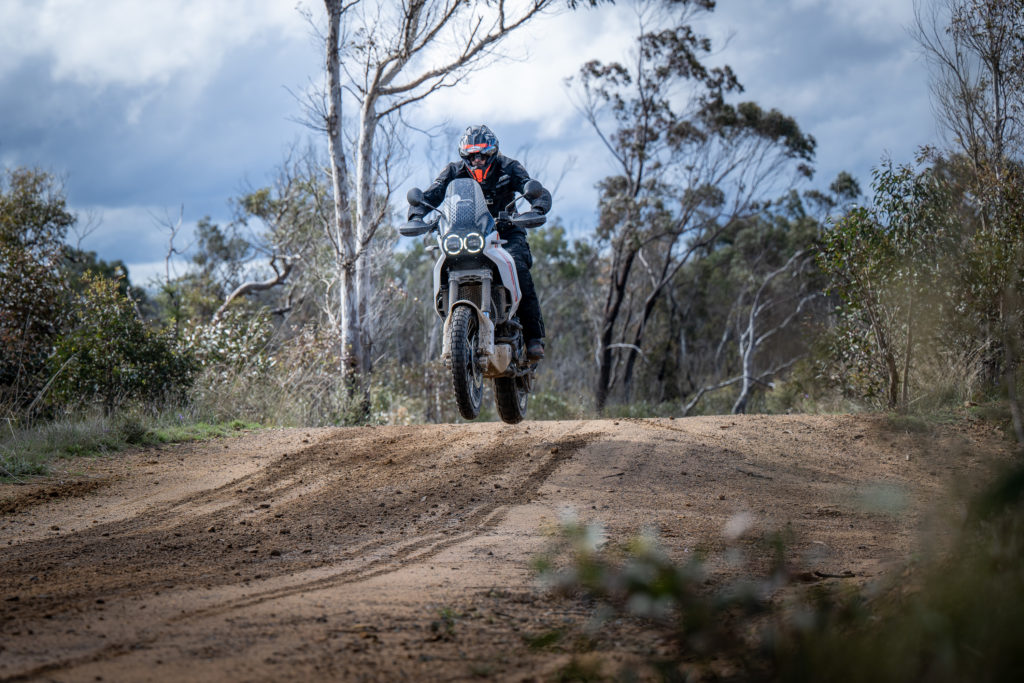
10. THERE ARE LOTS OF STANDOUT FEATURES TO CHOOSE FROM
For me, the standout features have to be the front-end stability, alongside its ability to recover from a bit hit. Once I got a feel for the chassis and the front-end’s penchant to just plough through rocks and ruts, it wasn’t long before I was sending it over water bars and trail features without a thought. No unwanted bucking or nose-dives; the DesertX just floating level and landing smooth. Throughout the two days, there were a couple of times I thought it was all over, with the front-end wanting to let go or tuck, both on the road and off, but always due to my over-exuberance! Thankfully, the combination of brilliant ABS, those well-valved KYB forks, sorted geometry, and steering stabiliser kept me on two wheels (okay, bar one tip-over in soft river shale).
Front-end feel was even more apparent on the first steep descent we hit. After climbing a steep, picture-perfect trail surrounded by green rolling hills, heading back down sans ABS had the rear sliding and bucking around all over the place, yet the solid feel and support from the front-end let me steer it through the loose rocks and overgrown junk covering the trail in a manner not dissimilar to a downhill MTB. Second attempt had me using the first level of ABS intervention in Enduro mode on the rear, which brought a whole new experience; smooth and controlled all the way down with the ability to slide controllably if need be with simply a bit more pressure on the brake pedal.
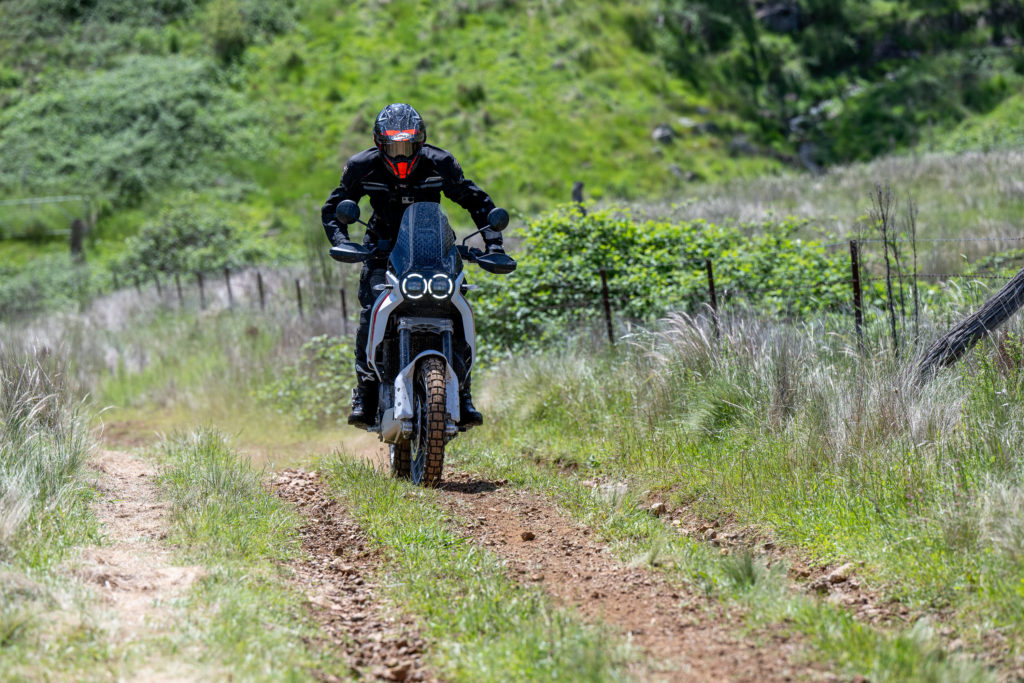
It’s here I really twigged to just how far the engine power delivery, traction control and ABS will go in to bat for you. Pretty remarkable. Case in point, putting the bike in Wet mode smooths throttle response out so much, you’re hard-pressed to get the wheel spinning; you just keep motoring forward. Grab a handful of front brake in a wet corner, and the cornering ABS applies the right pressure to slow you and not sit the bike up, or lose traction.
I know many will avoid such full-on intervention the majority of the time, but come the end of any big day on a bike, knowing it’s there to get you home is priceless in my book.
STAY TUNED
We can’t wait to get our hands on a long-term DesertX test unit. So, stay tuned over the coming months as we put the thing through its paces on longer rides and get more of an insight into what this machine is like to live with, maintain and modify.
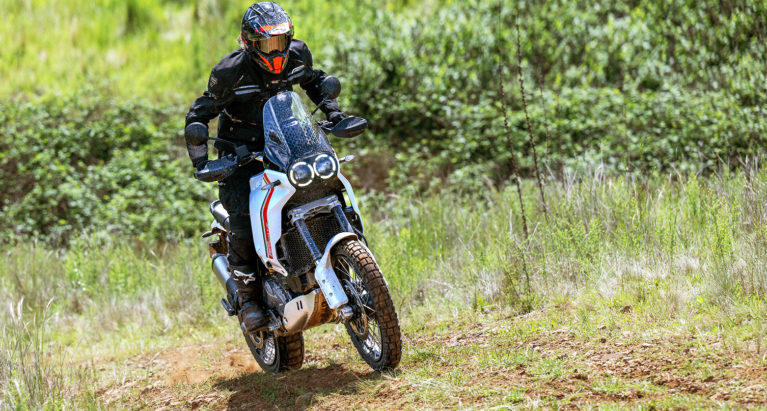
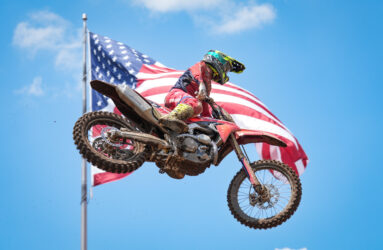
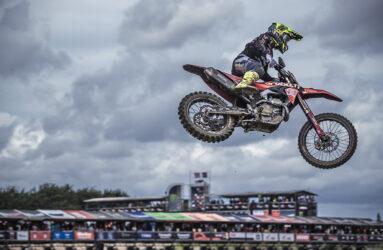


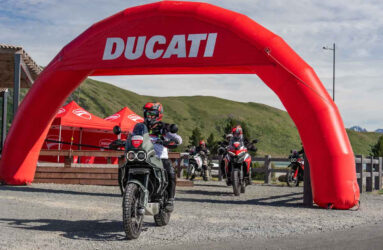

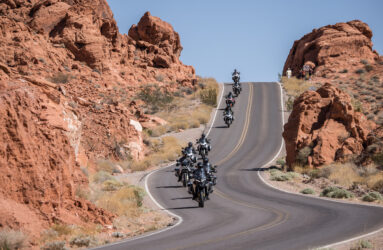
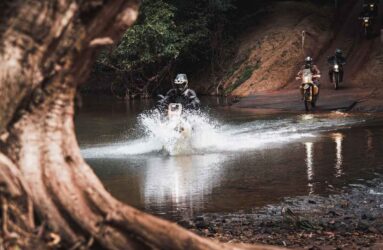
Be the first to comment...